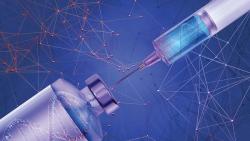
OR WAIT null SECS
- About Us
- Advertise
- Contact Us
- Editorial Info
- Editorial Contacts
- Editorial Advisory Board
- Do Not Sell My Personal Information
- Privacy Policy
- Terms and Conditions
© 2024 MJH Life Sciences™ and Pharmaceutical Technology. All rights reserved.
Filtration Clarification Needs in Annex 1
Misalignment around liquid filtration requirements and contamination control assurance still persist despite the revisions to Annex 1.
The revised European Union good manufacturing practice (EU GMP) Annex 1 guidance document (1), which was published on Aug. 25, 2022 and came into effect on Aug. 25, 2023, is a more detailed and comprehensive guideline that aims to enhance process understanding and incorporate new innovative tools. The updated Annex 1 also takes into account changes in regulatory and manufacturing environments. However, it is important to examine how the requirements for liquid sterilizing grade filtration within the revised Annex 1 align with technological advancements and contamination control assurance. This paper aims to review technology advances in filtration and identify areas that require clarification in the Annex 1 guidelines.
Filtration technology review
Sterilizing-grade filtration is a widely used method for sterilizing biologics, and it has become increasingly prevalent due to improvements in filter and membrane stability, advanced integrity tests, new design and chemistry features, and process validation activities. These advancements have significantly increased the reliability of aseptic processing steps using sterilizing grade filters, necessarily so; as for most biologics, sterile filtration is the only means of sterilization.
Modern sterilizing-grade membrane filters are designed and built to meet the strict requirements of the biopharmaceutical industry and regulatory authorities. These filters have undergone continuous optimization and development, resulting in several important features:
- Steam sterilization resistance: Filters can withstand high temperatures of up to 134 °C, making them suitable for sterilization by in-line steam or autoclaving even for multiple cycles. The temperature/differential pressure profile has been established, which supports the appropriate operating conditions during steam sterilization, preventing any damage.
- Gamma irradiation resistance: Single-use assemblies utilize filter capsules. These filters are resistant to gamma irradiation up to 50 kGy. The gamma irradiation method is validated to show proof the assembly is sterilized, and the assembly and filter membrane are compatible with the sterilization method, without damage.
- Minimal extractable substances: Even when used straight out of the box, these filters release extremely low levels of extractables, which have been published and are detailed in qualification documentation from the filter manufacturers.
- Mechanical resistance: Modern sterilizing filters can withstand 25,000 pulsations at a pressure difference of 70 psi (5 bar), ensuring their durability and reliability. Such tests are performed by filter manufacturers to assure the product robustness.
- Low unspecific adsorption: Most filters have been optimized to greatly reduce the amount of unspecific adsorption, which is of importance to avoid the retention of target proteins or other important fluid components, for example polysorbate.
- Optimal total throughputs: Some filters are designed to provide the highest possible volume of filtration, effectively reducing the cost per liter of filtered material. Highly asymmetric and heterogenous double layer filter designs are throughput focused filter types.
- Optimized flow rates: Some filters are engineered to achieve the most efficient flow rates, which can reduce processing times or the required filtration area. In this case, the filters have a high pleat density and therefore effective filtration area and are typically single layer membranes.
- Integrity testing: Sterilizing grade filters must be tested for their integrity using non-destructive methods such as diffusive flow, pressure decay, or bubble point tests. These tests have been successfully used for decades and are a reliable must-do test post-use.
- Full qualification documentation: The filters come with comprehensive qualification documentation, which lists a multitude of tests, for example, endotoxin release, Plastic Class VI, etc., ensuring that they meet the necessary regulatory standards.
- Individual process validation: The filters undergo process validation specific to the drug product being filtered under process conditions, confirming their compatibility, performance, and retentivity.
- Every sterilizing-grade filter is individually integrity tested by the filter manufacturer, as a release criterion for the product.
- The filter suppliers also recommend necessary shelf-life data for filtration and single-use assembly products and validate the packaging and transportation of these components to assure the product are not damaged.
Read this article in Pharmaceutical Technology®/Pharmaceutical Technology Europe® Quality and Regulatory Sourcebook eBook.
About the authors
Maik Jornitz is principal consultant, BioProcess Resources LLC
Article details
Pharmaceutical Technology
eBook: Quality and Regulatory Sourcebook 2024
March 2024
Pages: 10–13
Citation
When referring to this article, please cite it as Jornitz, M. Filtration Clarification Needs in Annex 1. Pharmaceutical Technology®/Pharmaceutical Technology Europe® Quality and Regulatory Sourcebook eBook (March 2024).



